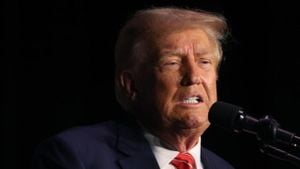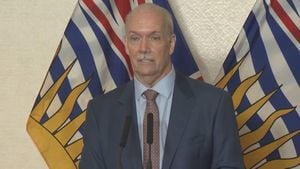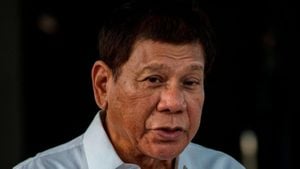Space exploration often captures our imagination and pushes the boundaries of human potential, yet recent events surrounding Boeing's Starliner have turned excitement to concern for two NASA astronauts: Sunita Williams and Barry Wilmore. Originally slated for only eight days at the International Space Station (ISS), these two astronauts have now been stuck there for over two months, and there’s still no clear answer on when they can safely return to Earth.
Both astronauts have been on board since June 5, 2024, when the Starliner finally launched after several delays. Initially, the mission was supposed to be straightforward. But on the very day the spacecraft was supposed to lift off, issues arose with some of its critical systems, leading to multiple postponements. A potential helium leak here, software glitches there—Boeing’s troubles began stacking up even before the Starliner left the ground. When it did finally launch and dock with the ISS, four new helium leaks materialized alongside more problems with the thrusters.
Let’s pause for context: thrusters on the Starliner help control its direction and response during landing. They are absolutely critical to the mission's success. Of the 28 thrusters, five have malfunctioned, leading to escalating tensions between NASA and Boeing about the spacecraft’s ability to return the astronauts safely.
Since reaching the ISS, Williams and Wilmore have been largely safe, surrounded by life-supporting supplies and plenty of science experiments to keep them busy. NASA insists they are not stranded, but as time passes, people are beginning to wonder about their future. Can the Starliner still be trusted for re-entry? Or will the astronauts have to wait even longer?
The concerns stretch beyond just getting them home safely. NASA and Boeing are under significant pressure to address the technical hiccups swiftly. Early reports indicated over 100,000 computer simulations have been run to find solutions to the issues troubling the spacecraft, yet no concrete return plan has emerged yet. The possibility of extending their stay until next year has even been mentioned.
This scenario poses troubling questions about brand loyalty, safety, and the very nature of space exploration contracts. NASA launched its Commercial Crew Program to diversify options for astronaut transport. That left the agency with Boeing’s Starliner and SpaceX’s Dragon capsule. While Boeing received $4.8 billion for its developments, SpaceX has completed multiple successful missions without the complications plaguing Starliner. The disparity between their performance has caused unsettling ripples within the space industry.
A former NASA executive recently mused about the astronauts being "kind of stuck," highlighting the infrastructure challenges present at the ISS. NASA provides each astronaut onboard with access to at least one reliable lifeboat; at the moment, the Starliner serves as such. But after cutting Starliner loose would open up more parking space for other vehicles, including perhaps the SpaceX Dragon, which could transport Williams and Wilmore back home sooner.
Adding to the tension, NASA is also examining whether it could send the pair back on SpaceX instead of their own Starliner. This consideration would be unprecedented. Could it really be the case where NASA's own contractor can’t fulfill its contract when SpaceX's Dragon is ready to go? Where does this leave Boeing?
While officials at Boeing continue to assert the safety and readiness of their capsule, public confidence has frayed. Some skeptics question the wisdom of launching the astronauts even with the initial helium leak still unresolved. What if more issues arise before landing? Could this hurt the astronauts’ chance of safe passage? It’s these kinds of questions lingering uncomfortably on people’s minds.
Also fueling the flames, the astronauts themselves are dealing with side effects from their extended stay: like eyesight issues—something common among long-duration space travelers. Alongside dealing with potential physical health concerns, morale also plays a significant role. Despite their situation, Williams and Wilmore have remained upbeat, assuring the world they’re keeping busy, aiding with repairs aboard the ISS, and engaging with ground-based scientists.
Boeing's recent reputation also hangs precariously over this situation. After the disastrous 737 MAX incidents and numerous scandals, Boeing now finds itself once again at the center of scrutiny. With mounting tensions over its aerospace division's reliability, the company is caught watching as its competitor, SpaceX, rises rapidly higher and higher.
This entire fiasco with the Starliner also raises broader questions about the future of space travel. Are we fully ready for the frontier of commercial space travel? Will the reputation of trusted manufacturers stand the test of endless deadlines and technical dilemmas? And most significantly, who do we hold accountable?
The reality is the time on the space station is not wasted. Sunita and Barry’s efforts still contribute to our scientific endeavors. NASA wants to continue utilizing Boeing’s Starliner, indicating there are plans to continue launching missions with the spacecraft as they iron out the bumps rather than throw the baby out with the bathwater.
So where do things stand now? The decision is upon NASA. A concluding decision by the agency is expected shortly on whether to send the astronauts home aboard the Starliner or utilize SpaceX’s Dragon. Meanwhile, with their supplies secured, including food and drinking water, the astronauts await clarity. What had once been excitement for exploration now teeters on anxiety over safety.
Let’s be honest; the prospect of Boeing’s failure to deliver on its promises is poignant. The efforts to return the astronauts safely have become more of public drama than just figures seizing infinity. All eyes are waiting for the final call. The consequences of this decision will ripple through NASA, Boeing, and the future of space collaborations for years to come, impacting everything from budgets to public trust.
For now, the world holds its breath as we wait for Williams and Wilmore to finally venture home. They’ve become symbols of the highs and lows experienced during this momentous venture of humanity’s space exploration. The thought of them re-entering Earth's atmosphere—and giving us their iconic thumbs up upon their return—will be one of triumph, but the road getting there could dictate much more than just personal victories.



